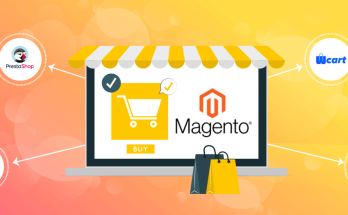Every time you think Microsoft is done releasing new tools, another one comes along. This time it’s Power Apps and it has nothing to do with keeping your device’s battery fully charged. Designed to work with Office 365, the tools can be a game changer for businesses of any size.
However, before you can take advantage of Power Apps, it helps to know what the tool offers users. Thankfully, understanding the complexities of power apps is relatively simple. In other words, you don’t need to be a master programmer to use Microsoft’s latest tools.
A Brief Explanation of Power Apps
Even the same sounds impressive. After all, anything with power in the title should be capable of producing amazing results. Power apps live up to this preconception. The tool makes it relatively easy to create custom apps that are accessible via a mobile or desktop device.
The tool uses features already included in Office 365, so there’s nothing else to buy, download, or upload. This alone is often good news for users tired of constantly downloading new tools. Just get the Power Apps tool up and running, and you’re good to go.
A primary reason for the growing popularity of Power Apps is you don’t need to go through programming school to use the tool. A business analyst shouldn’t have an issue creating a custom app. If you’re familiar with Flow (a cousin to Microsoft), you’ve got a head start. Both tools are designed with non-tech users in mind.
While this sounds great, don’t get too excited. You’ll need to have at least some experience with the various tools and data Power Apps is working with. In other words, you can’t just let Power Apps run loose and do its thing. You’re not going to get very far. If the app’s design is a little more complex, you may still need to bring web developers on board.
So, how does Microsoft define Power Apps? The tech giant defines its latest tool as a “suite of apps, services, connectors, and data platform that provides a rapid application development app environment for your business needs.” Yes, this definition is a little confusing and broad, but it gets the basic point across. You use the tool to create unique apps designed specifically for your business.
Another advantage of using Power Apps is its ability to bring all the various parts of your Microsoft platform together in one handy application. For example, you bring Excel, SharePoint Online, and Dynamics 365 together for an easier and more streamlined user experience. Instead of constantly clicking between the various Microsoft tools, you can access all of the features from a single application.
A Look at Power Apps Features
Like other automation tools offered by Microsoft, Power Apps comes with plenty of features that don’t require a knowledge of coding. Some of the features you can expect from Power Apps include:
- A library filled with sample apps that you can use as a starting point and customize along the way.
- A library of over 200 connectors to integrate data and systems including those across the Office 365 universe
- A drag and drop interface that’s a breeze to use while creating apps
- Close integrations with tools offered by Dynamics and Office 365
- Plenty of support that includes an active Power Apps community
This is only a sample of the tools Power Apps offers. As you can see, all of these features are geared to make app creation as simple and seamless as possible.
New Features are Coming to Power Apps
Microsoft is never sitting still so it shouldn’t surprise you that advancements are coming to Power Apps. One of the most exciting is the ability to tap into Microsoft’s machine learning and AI capabilities. This can make it easier to develop more advanced apps like the ability to track product items using only a photograph.
Using Power Apps for Your Business
Using Power Apps for your business opens up a ton of possibilities. You can use the tool to improve workflow, automate processes, and for data reporting. If you prefer your data presented in images like graphs and charts, no problem. Power Apps can also be used for data visualization. Teams and field workers can collaborate with each other, along with management teams and customers.
You can create a mobile app or website with the tool or use it within a Microsoft platform like Teams or Office 365. In a sense, the possibilities for business usage are almost unlimited. Want some more examples of how you can use Power Apps for your business?
- Allow field workers to enter data without returning to the office. They can log repairs or the results of an on-site inspection, for example.
- Creating an app to know your client can ensure staff is performing due diligence. This can include everything from ensuring the new client’s information is entered into the database to ensuring other various criteria are covered.
- The tool can create standard documents that staff can use as models like contracts. This saves time and resources, allowing staff to focus on other pressing tasks.
- Create a 360 appraisal system using 360 to streamline workflow and reporting from various users. The created app can eliminate duplicate reports while also organizing the data and workflow.
- Your IT department can create an app designed specifically for tracking assets like mobile devices, hardware, and software licenses. If a software license is close to expiring, you have plenty of time to renew or cancel the contract without incurring additional fees.
Businesses typically rely on their marketing departments to generate leads and promote sales. Power Apps can simplify this process by using automated tools. The tools can follow up with customers based on their responses and interactions with your website.
Are Power Apps Right for Your Business?
Considering whether Power Apps are essential for your business? The answer leans strongly towards yes. Even if it doesn’t seem immediately necessary, it’s a technology you’ll likely want to explore sooner rather than later. Power Apps offers the remarkable advantage of enabling businesses to develop custom applications with minimal complexity and cost.
This capability is invaluable across all sectors, as it allows for the streamlining of processes, enhancing productivity, and providing tailored solutions to meet unique business needs. Adopting Power Apps can propel your business forward by leveraging technology to solve specific challenges, thereby offering a competitive edge in your industry.



